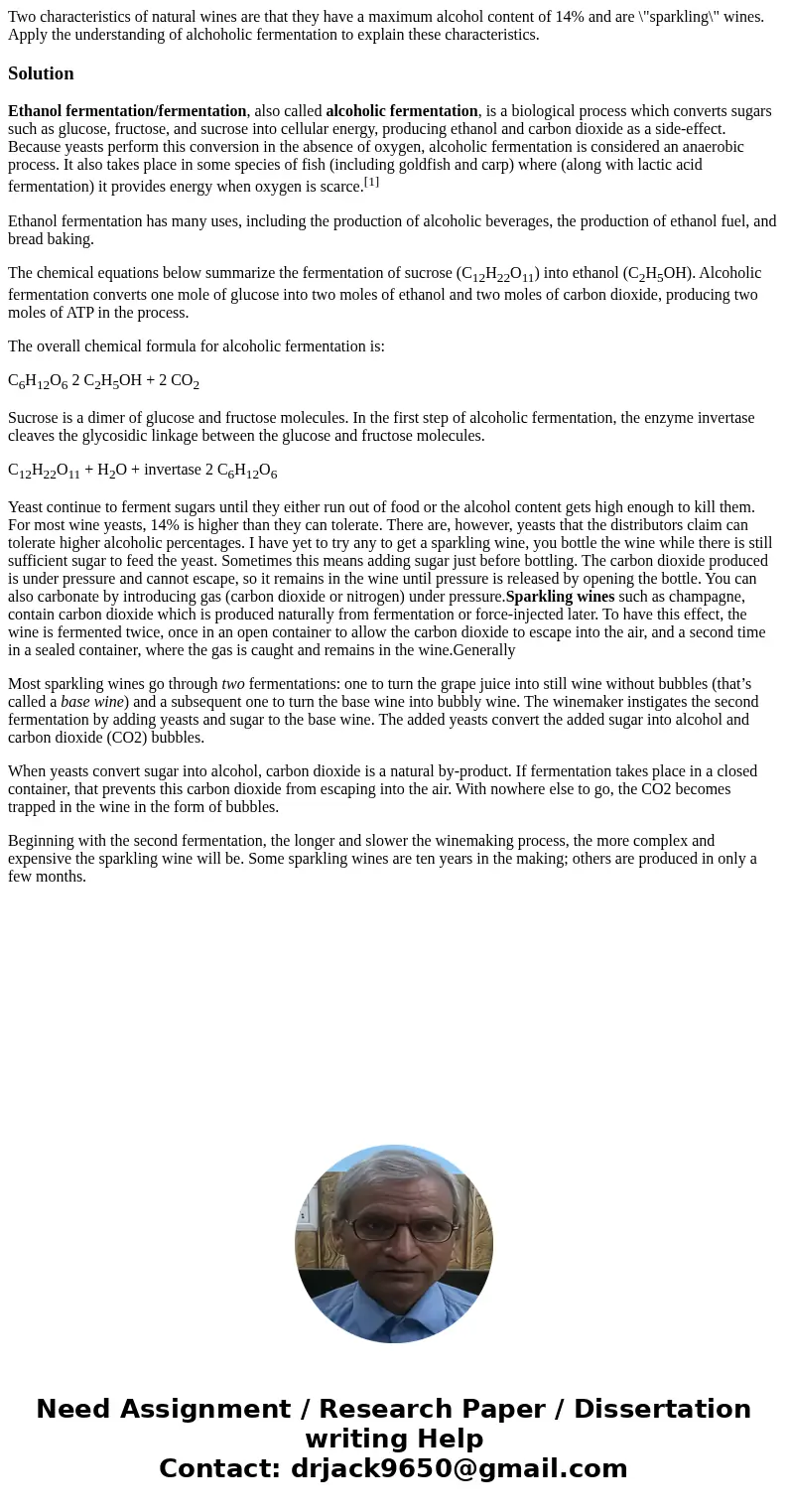Two characteristics of natural wines are that they have a ma
Two characteristics of natural wines are that they have a maximum alcohol content of 14% and are \"sparkling\" wines. Apply the understanding of alchoholic fermentation to explain these characteristics.
Solution
Ethanol fermentation/fermentation, also called alcoholic fermentation, is a biological process which converts sugars such as glucose, fructose, and sucrose into cellular energy, producing ethanol and carbon dioxide as a side-effect. Because yeasts perform this conversion in the absence of oxygen, alcoholic fermentation is considered an anaerobic process. It also takes place in some species of fish (including goldfish and carp) where (along with lactic acid fermentation) it provides energy when oxygen is scarce.[1]
Ethanol fermentation has many uses, including the production of alcoholic beverages, the production of ethanol fuel, and bread baking.
The chemical equations below summarize the fermentation of sucrose (C12H22O11) into ethanol (C2H5OH). Alcoholic fermentation converts one mole of glucose into two moles of ethanol and two moles of carbon dioxide, producing two moles of ATP in the process.
The overall chemical formula for alcoholic fermentation is:
C6H12O6 2 C2H5OH + 2 CO2
Sucrose is a dimer of glucose and fructose molecules. In the first step of alcoholic fermentation, the enzyme invertase cleaves the glycosidic linkage between the glucose and fructose molecules.
C12H22O11 + H2O + invertase 2 C6H12O6
Yeast continue to ferment sugars until they either run out of food or the alcohol content gets high enough to kill them. For most wine yeasts, 14% is higher than they can tolerate. There are, however, yeasts that the distributors claim can tolerate higher alcoholic percentages. I have yet to try any to get a sparkling wine, you bottle the wine while there is still sufficient sugar to feed the yeast. Sometimes this means adding sugar just before bottling. The carbon dioxide produced is under pressure and cannot escape, so it remains in the wine until pressure is released by opening the bottle. You can also carbonate by introducing gas (carbon dioxide or nitrogen) under pressure.Sparkling wines such as champagne, contain carbon dioxide which is produced naturally from fermentation or force-injected later. To have this effect, the wine is fermented twice, once in an open container to allow the carbon dioxide to escape into the air, and a second time in a sealed container, where the gas is caught and remains in the wine.Generally
Most sparkling wines go through two fermentations: one to turn the grape juice into still wine without bubbles (that’s called a base wine) and a subsequent one to turn the base wine into bubbly wine. The winemaker instigates the second fermentation by adding yeasts and sugar to the base wine. The added yeasts convert the added sugar into alcohol and carbon dioxide (CO2) bubbles.
When yeasts convert sugar into alcohol, carbon dioxide is a natural by-product. If fermentation takes place in a closed container, that prevents this carbon dioxide from escaping into the air. With nowhere else to go, the CO2 becomes trapped in the wine in the form of bubbles.
Beginning with the second fermentation, the longer and slower the winemaking process, the more complex and expensive the sparkling wine will be. Some sparkling wines are ten years in the making; others are produced in only a few months.

 Homework Sourse
Homework Sourse